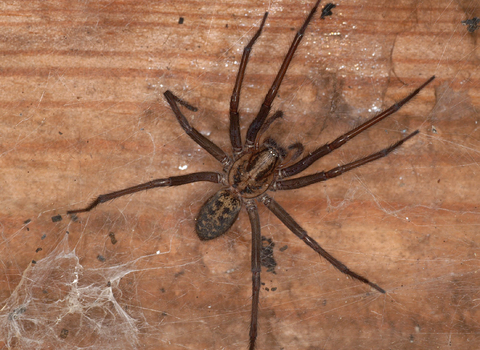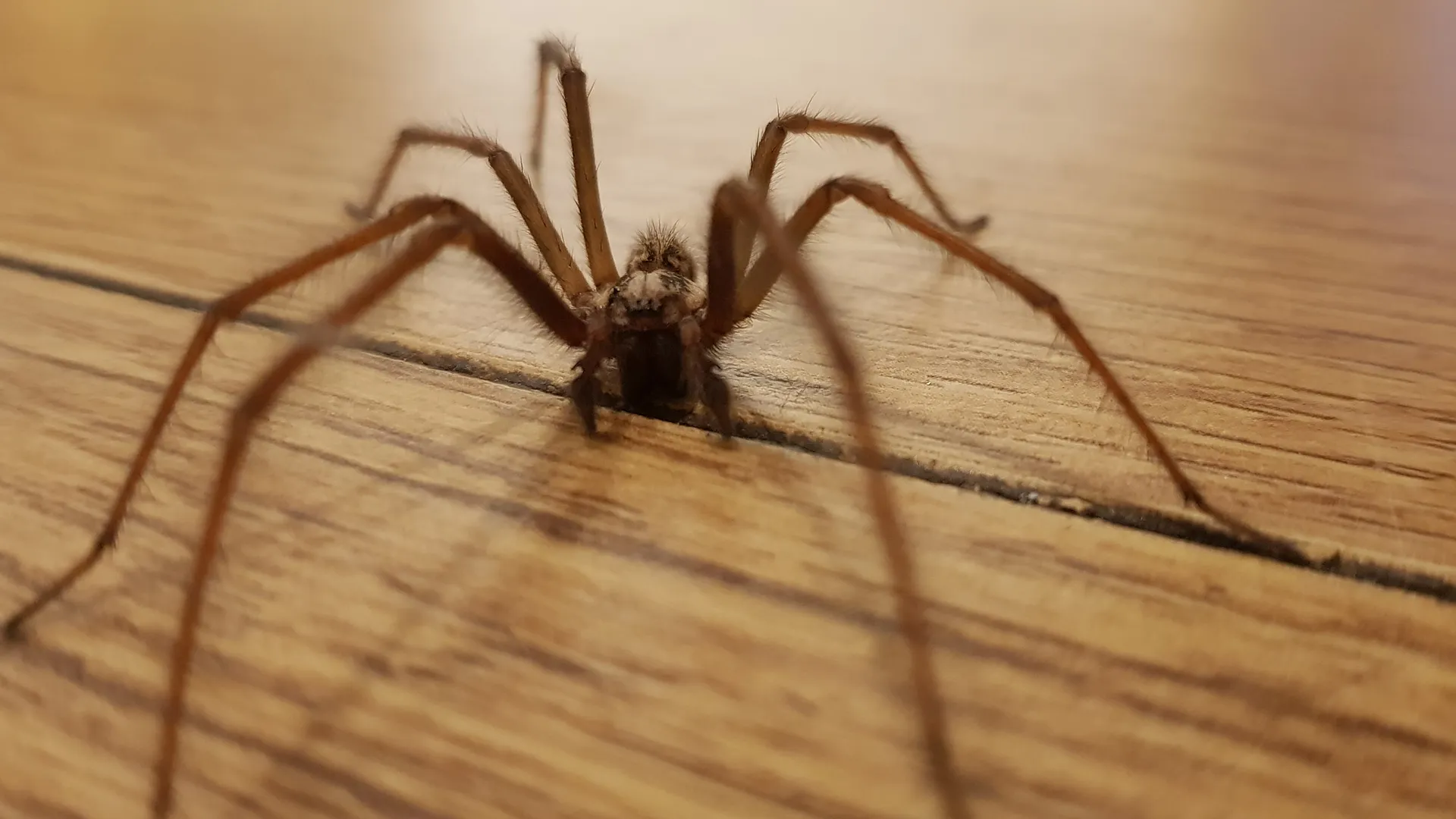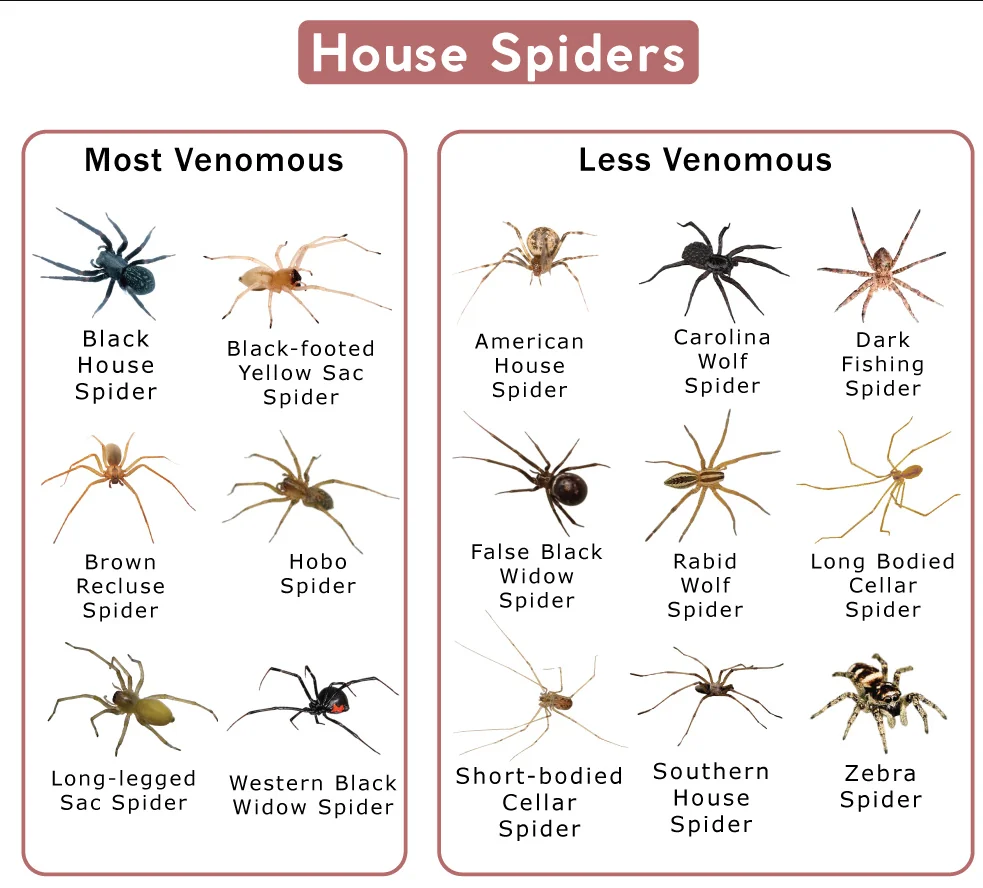Spider Treatments in Florida
Exterminator Services for Deltona, DeLand, DeBary, Orange City, Eustis, and Lake Helen
Florida’s subtropical climate – known for its mild winters, higher humidity, and plentiful warmth – appeals to people seeking comfortable living or picturesque scenery. Unfortunately, the same conditions can also encourage spiders, which thrive where stable temperatures and abundant insect prey exist. While many Florida spiders are harmless and help control pests, others, especially venomous species, can unsettle occupants, disturb daily routines, and occasionally pose health risks if left unchecked. In Deltona, along with neighboring locales such as DeLand, DeBary, Orange City, Eustis, and Lake Helen, a spider problem can grow silently behind furniture or in corners if occupant housekeeping or insect control measures fail. This service page explores why spiders prosper in Florida’s environment, the signs that they have infiltrated a property, and why hiring a professional spider exterminator for spider treatments remains the most dependable route to maintaining a pest-free and comfortable living or working space. Acting swiftly upon noticing webs or spotting venomous spiders spares occupants from repeated web clearing, possible bites, and persistent anxiety over hidden eight-legged visitors.
Why Spiders Thrive in Florida

- Mild Winter Conditions
In colder regions, extended freezing weather can reduce spider populations or drive them into dormancy for months. Florida’s winter seldom sustains near-freezing levels, letting spiders remain active and feed all year if occupant vigilance or pest management is lacking. Heated or air-conditioned buildings further stabilize warm indoor temperatures, granting spiders a comfortable environment to spin webs and prey on insects. - High Humidity and Consistent Rainfall
Many spiders follow prey insects that flourish in humid or wet areas. Florida’s frequent rain showers and moisture-laden air ensure robust insect life, sustaining the food supply spiders rely on. In damp corners – basements, bathrooms, or near leaky pipes – occupant housekeeping or dryness measures might slip, allowing spiders to nest quietly. - Minimal Seasonal Dormancy
Where northern climates see months of cold that slow spider breeding, Florida’s milder weather imposes no such forced break. A few unnoticed spiders left behind after occupant attempts can steadily multiply year-round, underlining occupant or professional measures as necessary to prevent expansions. - Indoor Climates Suited for Spiders
Air conditioning or heating in Florida homes and workplaces maintains consistent interior conditions, seldom deterring spider presence. Without occupant-based detection—like routine vacuuming or scanning corners for webs—spiders hide in furniture seams, behind décor, or in attic rafters, building webs and laying egg sacs if unimpeded. - Ample Insect Populations
Roaches, mosquitoes, moths, and ants abound in Florida’s warm, humid environment. Because spiders feed on these insects, robust insect populations inadvertently sustain spider expansions. Failure to control general insects can indirectly invite spider overgrowth indoors if occupant or building manager steps are insufficient.
Warning Signs of a Spider Presence
- Frequent Webs in Corners or Along Ceilings
Discovering webs across windows, corners, or behind furniture that reappear swiftly after occupant removal suggests a significant spider problem. Multiple webs spanning high-traffic areas or persistent webbing in the same spots often indicates many spiders constructing or rebuilding these traps. - Egg Sacs
Spiders deposit egg sacs containing numerous spiderlings in protected corners or attached to webs. Spotting these small, silken pouches indicates active breeding, calling for occupant or professional measures to prevent a larger outbreak once the eggs hatch. - Venomous Spider Sightings
In Florida, species like the black widow (recognizable by a red hourglass marking) or brown widow can occasionally appear in dim garages, outdoor furniture, or cluttered storage. Though bites are rare if they remain undisturbed, occupant or caretaker caution and immediate removal helps avoid possible harm to pets or children. - Unsettled Occupants
Some individuals have strong arachnophobia, heightening anxiety if multiple spiders appear in bathrooms or bedrooms. Even harmless orb-weavers can hamper occupant routines if webs accumulate near doorways or hamper daily usage of certain rooms. - Insect Prey Abundance
Properties with prevalent insect populations—like roaches or mosquitoes—frequently lure hunting spiders. If occupant or caretaker solutions fail to control insects, spider numbers might climb steadily, feeding on the surplus. Minimizing insect attractants indoors indirectly lowers spider attraction.
Consequences of Ignored Spiders
- Proliferation of Webs
Though many spiders pose minimal health risk, ignoring multiple webs can grow into a more extensive infestation across corners, ceilings, or eaves. Occupants or staff might waste daily effort removing fresh webs only to see them return by the next morning. - Potential Bites
While most Florida spiders rarely bite unless threatened, a few venomous species could injure humans or pets if unexpected contact occurs. Quick occupant or professional identification and removal of these spiders eliminates the risk of painful or medically concerning bites. - Occupant Anxiety
Even harmless spider sightings can alarm family members or employees, overshadowing daily comfort. Occupants might avoid certain areas or closets once they see multiple spiders scuttling around. A complete extermination approach assures occupant calm, letting them fully use their property.
Egg Sac Hatches
Overlooking small egg sacs fosters spiderling surges once they hatch, spinning webs across new corners or behind major appliances. Eliminating or vacuuming egg sacs early prevents a wave of young spiders populating the premises.

Why a Professional Exterminator Is Essential
- Accurate Species Recognition
A spider exterminator first discerns if occupant sightings revolve around harmless house spiders, beneficial orb-weavers, or more concerning venomous types. Understanding the species clarifies whether occupant or staff should emphasize perimeter spraying, web removal, or crack sealing. - Precise Application of Treatments
Overuse of general sprays might push spiders deeper into wall voids or saturate occupant areas unnecessarily. Professionals employ insecticides, insect growth regulators, or mechanical de-webbing exactly where spiders nest—like attic corners, eaves, or under furniture—limiting occupant chemical exposure while maximizing spider contact. - Insect Prey Management
Because spiders gather where insect prey abounds, occupant or professional steps limiting roaches or mosquitoes indirectly starve spider populations. This synergy fosters lasting results by cutting off spider food sources, preventing re-establishment. - Physical Removal of Webs and Egg Sacs
Vacuuming or brushing away webs and attached egg sacs immediately cuts spider numbers. Repeated occupant or professional removal, paired with insecticidal usage in corners or eaves, prevents webs from recurring and stops the next generation from hatching. - Follow-Up and Prevention
Because spider eggs might hatch days or weeks later, occupant re-checks confirm if new webs appear. If occupant sightings persist—like fresh webs or venomous spiders near garages—additional treatments or yard measures finalize occupant comfort, ensuring no pockets remain overlooked.
Methods a Spider Exterminator Might Use
- Inspection and Analysis
Professionals search corners, ceilings, garages, or behind large furniture for webs, spider egg sacs, or hidden insects. They might also evaluate yard edges for orb-weaver webs near shrubs or damp corners. Identifying probable species (like widow vs. house spider) guides targeted solutions. - De-Webbing and Egg Sac Disposal
Systematically removing webs physically disrupts spider feeding setups. Vacuuming webs, along with egg sacs, instantly reduces the spider population. Occupants or staff typically discard these materials in sealed plastic outside to prevent spiderlings from escaping into living areas. - Insecticidal or IGR Sprays
Applying insect growth regulators or adulticidal sprays around baseboards, cracks, or eaves kills spiders crossing treated surfaces. Occupants often leave the area until dryness for safety, then return as normal once products settle. These sprays remain active for days or weeks, handling newly emerged spiders. - Outdoor Perimeter Sprays
Because many spiders come from yards into structures, perimeter treatments around foundations, windows, and door frames hamper infiltration. Minimizing insects near property edges—like roaches or mosquitoes—also indirectly lowers spider presence by removing their food source. - Follow-Up Monitoring
Because spider egg sacs may hatch weeks after occupant or caretaker removal, occupant checks or second-wave professional visits confirm none survived. If occupant sightings remain or venomous species reappear, additional spot treatments finalize occupant relief, letting them resume daily life free from lurking arachnids.

Serving Deltona, DeLand, DeBary, Orange City, Eustis, Lake Helen
Deltona: A growing community experiencing occupant or short-term rental transitions that inadvertently bring spiders if occupant housekeeping or pest control is minimal. Quick occupant scanning for webs behind couches or near eaves, plus professional solutions, halts expansions across multiple rooms.
DeLand: Combining historic districts with modern growth, DeLand can house spiders in older cracks or spaces behind antiques. Occupant synergy—like removing webs promptly—and robust insect control hamper the spider food chain, limiting spider expansions behind walls or in attic corners.
DeBary: Suburban living near farmland edges might see spiders cross yards if occupant dryness or yard upkeep lags. Minimizing insect prey—like roaches—through occupant housekeeping, plus occupant-based web removal, keeps spiders from saturating corners or ceilings.
Orange City: A smaller area with occupant transitions or secondhand product trades potentially carrying hidden spiders or insect prey. Occupants verifying used furniture for webs or eggs helps hamper infiltration. If occupant sees repeated sightings, an integrated approach ensures thorough coverage.
Eustis: Lakeside settings occasionally harbor insects that feed local spiders. Occupants addressing yard moisture and removing clutter hamper spider expansions. If occupant or caretaker finds venomous varieties in garages or storage, immediate occupant or professional removal fosters occupant reassurance.
Lake Helen: Known for its tranquil vibe, Lake Helen’s climate fosters near-constant spider breeding if occupant or caretaker oversight is scant. Observing new webs each morning or egg sacs along walls indicates occupant synergy with a thorough extermination plan is needed to reclaim occupant comfort.
Why Our Spider Solutions Excel
- Florida-Adjusted Tactics
Because mild winters do not naturally curb spiders, occupant synergy—like controlling roaches or sealing cracks—plus targeted chemical or mechanical removal ensures spiders meet lethal conditions. This synergy addresses year-round expansions effectively. - Precision and Safety
We apply sprays or insect growth regulators exactly where spiders lurk—like eaves, corners, or furniture seams—avoiding occupant overexposure to chemicals. Occupants often remain on-site, briefly avoiding treated areas until dryness or recommended re-entry times pass. - Preventative Occupant Training
Removing existing spiders only partially solves the issue. Occupants adopting insect management, sealing foundation lines, or switching to lighting less attractive to insects (like yellow bulbs) hamper spider re-establishment. This occupant plus professional synergy ensures ongoing spider deterrence. - Follow-Up Confirmation
Because egg sacs may hatch weeks after occupant removal, occupant re-checks confirm none linger. If occupant sightings remain—like fresh webs or venomous spiders—secondary treatments finalize occupant calm, ensuring no hidden pockets endure behind furniture or in yard corners.
Next Steps
Seeing multiple webs accumulate swiftly, concerned about black widow spiders in the garage, or stumbling on egg sacs in closet corners? Contact us to learn more or schedule your service. Our spider exterminator options in Deltona, DeLand, DeBary, Orange City, Eustis, and Lake Helen remove adult spiders, egg sacs, and reduce insect prey, freeing you from potential bites and daily web clearing. By choosing professional spider treatments, occupant guesswork and repeated do-it-yourself attempts end, guaranteeing spider coverage even in seldom-used corners or behind large appliances.
Swift occupant action—like vacuuming webs, scanning yard corners, or controlling roach populations—prevents a few spiders from overtaking entire rooms. Coupled with occupant-based dryness and thorough chemical or mechanical control solutions, spiders soon face lethal contact at every life stage. Freed from tangling webs across doorways or the risk of venomous bites lurking behind storage crates, property owners in these central Florida communities enjoy the mild weather and local vistas unencumbered by eight-legged intruders testing occupant nerves.
Sustaining a Spider-Free Property
- Remove Webs Immediately: Consistently vacuum or brush away any new webs – especially those bearing egg sacs. Occupant vigilance each day ensures spiders lose established feeding sites, gradually forcing them out.
- Minimize Insect Prey: Since spiders follow insects, occupant or professional roach or mosquito control indirectly hampers spider proliferation. Storing food properly and sealing cracks hamper insect infiltration.
- Yard Maintenance: Mowing grass short, discarding leaf litter, or ensuring no standing water near fences reduces insect habitats. Spiders lose bountiful food sources, limiting their interest in creeping indoors.
- Seal Foundation Lines: Spiders can enter through unsealed door sweeps or small cracks along exterior walls. Occupant-caulked openings or updated door seals help block them from migrating inside.
- Check Outdoor Lighting: Standard white bulbs draw insects, drawing more spiders. Switching to yellow “bug lights” or relocating exterior fixtures lowers insect swarms, indirectly reducing spider presence near entryways.
Through occupant diligence—removing webs daily, scanning corners for new egg sacs—and specialized extermination—like insect growth regulators or mechanical removal—families and businesses in southwestern Florida maintain a secure environment free from unwanted arachnid inhabitants. Despite Florida’s mild winters supporting nearly uninterrupted spider activity, occupant synergy and targeted spider control ensure these eight-legged insects lose their stronghold behind walls or in yard edges, preserving occupant comfort and property appeal year-round.
